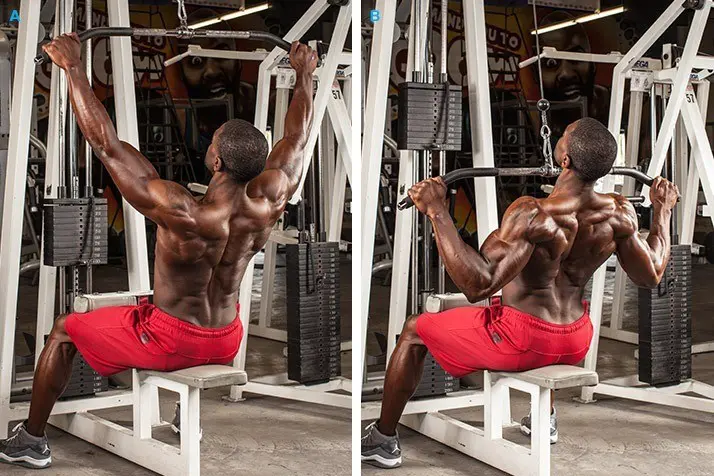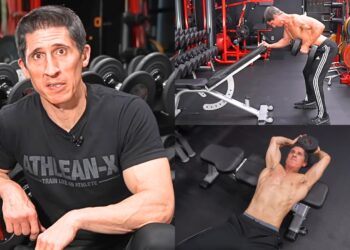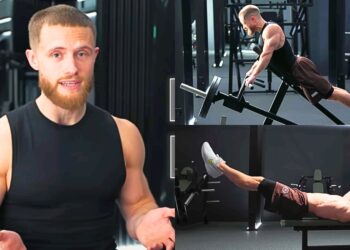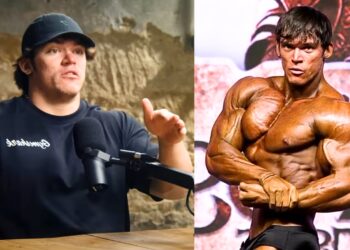There is something about a well-built back that is super-impressive. It makes you look powerful and even intimidating. A good back is visible from all angles – front, side, and rear – and will give you that much sought-after V-shaped torso.
While several muscles make up your back, including your traps and erector spinae, the lats are arguably the most important and impressive. When well developed, they actually look like wings.
Of all the backs in bodybuilding, Franco Columbo had one of the best. It was his amazing lat width that earned this Mr. Olympia winner the nickname “The Bat.”
Don’t leave your lat development to chance. Instead, make sure you build your back workouts around the best lat exercises.
Lats Anatomy
While you don’t need to be an anatomy expert to build big lats, it’s always a good idea to know a muscle’s main functions so that you can choose the best exercises. That way, you’ll also be able to avoid exercises that, for anatomical and physiological reasons, just don’t work.
Level Up Your Fitness: Join our 💪 strong community in Fitness Volt Newsletter. Get daily inspiration, expert-backed workouts, nutrition tips, the latest in strength sports, and the support you need to reach your goals. Subscribe for free!
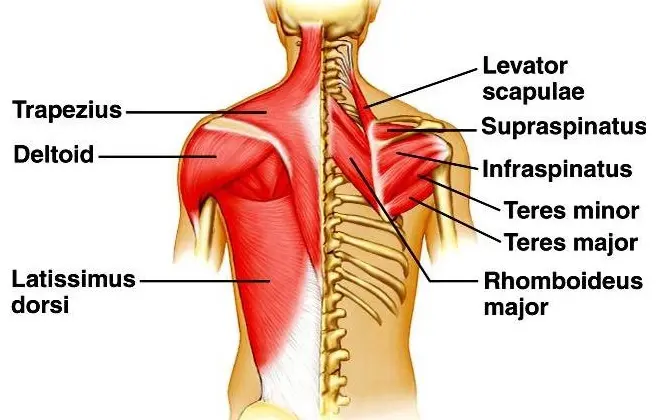
Lats is short for latissimus dorsi, which come from the latin for side back muscles. This is useful as it describes exactly where your lats are located. The lats cross and control your shoulder joint and have three main functions:
Shoulder adduction– adduction means drawing a limb in toward the midline of your body. In this case, it’s the shoulder or, more specifically, the upper arm. As the lats contract, they pull your upper arm into your side. This movement occurs during exercises like wide grip pulldowns and pull-ups.
Shoulder extension– your lats are also responsible for pulling your upper arms back and behind you, which is a movement properly called shoulder extension. Your lats work to extend your shoulders in exercises like seated and bent over rows.
Shoulder medial rotation– this means turning your upper arms inward toward the midline of your body. This is a common movement that occurs during many lat, chest, and shoulder exercises, but it not a specific lat building movement.
The 7 Best Lat Exercises for Strength:
1. Lat pulldowns
The lat in lat pulldowns isn’t short for latissimus dorsi. Instead, it’s short for lateral, which is the plane of movement that this exercise involves. Still, it’s an excellent way to remember what muscle this classic back builder is designed to target. No back workout is complete without at least a few sets of lat pulldowns.
How to do it:
- Grip and hold the bar with an overhand, shoulder-width grip. Sit on the seat with your legs bent and feet flat on the floor. Lift your chest and lean back slightly.
- Without jerking or snatching at the weight, bend your arms and pull the bar down to your upper chest. Keep your elbows directly below your hands and keep pulling your shoulders down and back. Lead with your elbows to increase lat activation.
- Pause in the most contracted position for 1-2 seconds and then smoothly extend your arms and repeat.
Benefits:
- Easy to learn
- Ideal for beginners
- Useful for building muscle size and endurance
- You can use different bars to add variety to your workouts
2. Pull-ups and chin-ups
Pull-ups and chin-ups are two different lat building exercises, but they are similar enough that they can be discussed at the same time. Pull-ups involve a slightly wider than shoulder-width overhand grip, while chin-ups are done with a narrower, underhand grip. This exercise can also be done with a neutral or palms facing in grip. All variations of pull-ups and chin-ups are great for building lat mass and strength.
How to do it:
- Hang from a suitable bar using a slightly wider than shoulder-width overhand grip (pull-ups), a narrower, underhand grip (chin-ups), or a neutral grip as preferred.
- Your arms should be straight, with your abs braced, and shoulders pulled down and back.
- Without kicking your legs, bend your arms and pull your chin up and over the bar. Pause at the top for 1-2 seconds.
- Extend your arms and lower yourself slowly down. Do not relax your shoulders.
- Pull yourself back up and repeat.
Benefits:
- A useful progression from pulldowns
- Suitable for building strength
- Can be done anywhere you can find a bar to hang from
- You can add weight to make this exercise harder, e.g., a weighted vest or chin/dip belt
3. Seated cable rows
While pulldowns and pull-ups are all about shoulder adduction, all rowing movements involve shoulder extension. Lat pulldowns and pull-ups are thought to be best for building wider lats, but rows make your lats thicker. If you want to create a 3D back, you need both shoulder adduction and extension exercises. As bodybuilders like to say, if you’re going to grow, you gotta row!
Level Up Your Fitness: Join our 💪 strong community in Fitness Volt Newsletter. Get daily inspiration, expert-backed workouts, nutrition tips, the latest in strength sports, and the support you need to reach your goals. Subscribe for free!
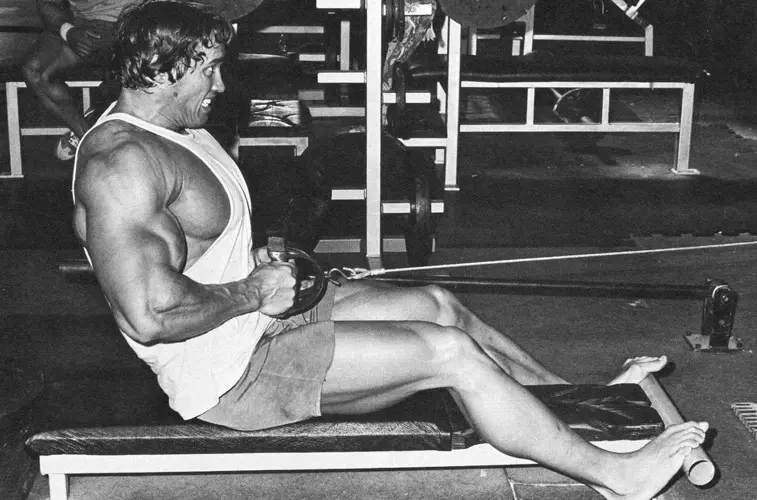
How to do it:
- Sit on the rowing machine bench with the handle in your hands. Bend your legs slightly and then sit up tall, so your back is straight. Look straight ahead. Pull your shoulders down and back.
- Bend your arms and pull the handle into your abdomen. Keep your upper arms close to your sides. Think about leading with your elbows.
- Extend your arms and repeat.
- You can also lean forward from your hips as you straighten your arms to give your lats an extra stretch and increase the range of motion. However, this technique may increase the stress on your lower back, so use it with caution.
Benefits:
- Good for developing upper back thickness
- Also works your mid-traps, rhomboids, and posterior deltoids
- A more lower back-friendly exercise than barbell bent-over rows
4. Single arm dumbbell rows
Single-arm dumbbell rows use a similar movement to seated cable rows but allow you to work one side at a time. This is useful for identifying and fixing left-to-right strength imbalances. In addition, they also allow you to use a more extended range of motion and that added lat stretch may lead to greater muscle hypertrophy or growth.
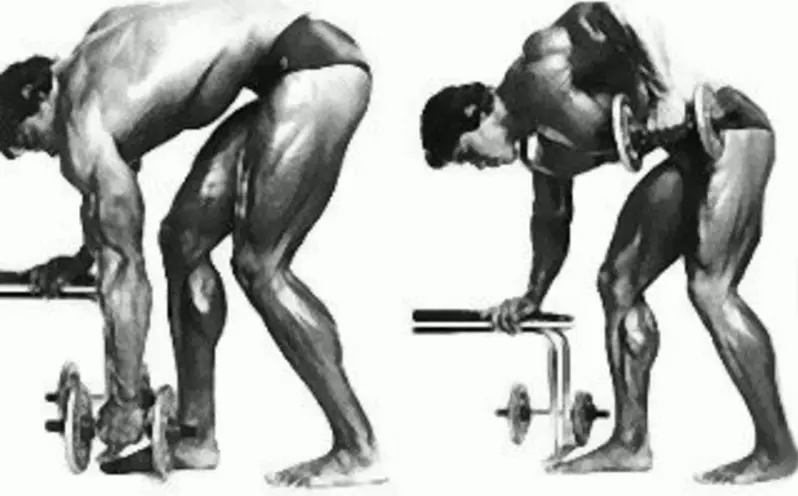
How to do it:
- Hold a single dumbbell in one hand. Lean forward and place your free hand on a bench.
- Let your dumbbell hang down from your shoulder, but don’t relax. Instead, pull your shoulder down and back. Bend your knees slightly, brace your abs, and slightly arch your lower back.
- Bend your arm and pull the dumbbell up and into the side of your ribs. Lead with your elbow and keep your wrist straight. Do not allow your lower back to round.
- Slowly extend your arm and repeat.
- Do the same number of reps on each arm.
- You can also do this exercise with one knee resting on a bench.
Benefits:
- Easy on your lower back
- Useful for fixing strength or muscle size imbalances
- No specialist equipment required
- Work your lats, mid-traps, rhomboids, and posterior deltoids at the same time
5. Underhand grip barbell bent over rows
Bent over barbell rows are a somewhat controversial exercise. While they are excellent for building bigger lats, they can also be hard on your lower back. They’re safe enough when done properly, but if you cannot stop your lower back from rounding or already have lower back problems, you should probably give this exercise a miss.
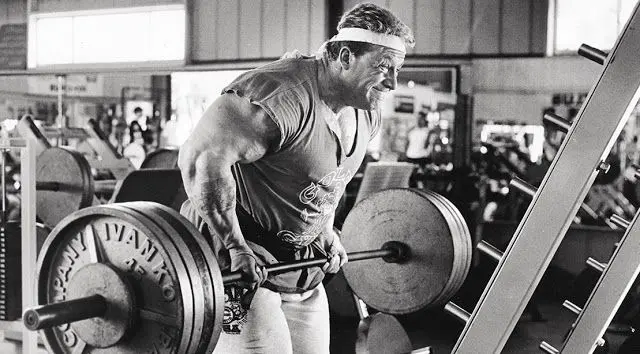
How to do it:
- Grip and hold a barbell with an underhand, hip-width grip.
- Bend your knees slightly, brace your abs, and then lean forward from your hips. Do not round your lower back. Your torso should be inclined to somewhere between 45-90 degrees.
- Starting with your arms straight, pull the bar up and into your abdomen. Lead with your elbows and keep your upper arms close to your sides.
- Extend your arms and repeat.
Benefits:
- A proven mass builder
- Also works your erector spinae
- Useful for developing functional, total body strength
6. Chest-supported machine rows
If your gym has a chest-supported rowing machine, you have access to excellent lat building exercise that is also easy on your lower back. With no lower back involvement to worry about, you are free to focus on pulling with maximal effort. This is a good exercise for anyone with lower back issues.

How to do it:
- Adjust the chest pad so that, when you lean against it, you can only just reach the handles.
- Sit on the machine, so your feet are flat on the floor or footrests, and your chest is against the pad. Reach forward, grab the handles, and then pull your shoulders back and down.
- Bend your arms and pull the handles toward you. Keep your wrists straight and focus on leading with your elbows. Pause at the midpoint of your rep for 1-2 seconds.
- Slowly extend your arms, but do not relax your shoulders.
- Repeat for the desired number of repetitions.
Benefits:
- Low risk of injury
- Good for developing a thicker upper back
- Easy to learn and master
- Can be done with one or two hands as preferred
7. Dumbbell pullovers
Dumbbell pullovers are a combined lat and chest exercise that also involves the long head of your triceps, which is the muscle located on the back of your upper arm. Because of this, golden-era bodybuilders used to call pullovers the upper body squat as it worked so many muscles.
Its main benefit is that it allows you to work your lats without involving your biceps, so it’s a good exercise for the end of your back-building workout when your arms are getting tired.
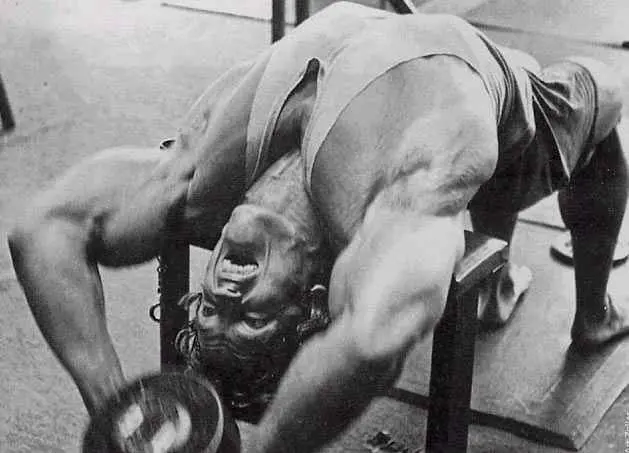
How to do it:
- Lie on a bench with your arms extended straight up to the ceiling and a dumbbell in your hands. Either interlace your fingers or hold the inside of the weight plates as preferred.
- Plant your feet firmly on the floor, brace your abs, arch your lower back slightly, and bend your elbows just a little, but then keep them rigid for the duration of your set.
- Without bending your arms, lower the dumbbell back and over your head as far as your flexibility allows.
- Pull the weight back up and over your chest and then repeat.
- You can also perform this exercise while lying across a bench, but doing so tends to increase lower back strain. Some gyms also have equally beneficial pullover machines.
Important lat training tips
Get the most from your lat building workouts with these handy, helpful tips!
Use your mind-muscle connection
To work your lats effectively, you must put your mind into the muscles so that you can really feel them working. If you don’t, you may end up using your biceps more than your lats. Use a slow, controlled tempo, focus on keeping your shoulders down and back, and lead with your elbows to fully activate your lats.
Using too much weight may take the stress off your lats and put it on your biceps. If you can’t feel your lats working, you won’t get the muscle-building results you want.
Vary your grip
Most lat exercises can be performed with a variety of different hand positions, including pronated, supinated, and neutral. Using different grips changes the feel and effect of whatever lat exercise you are doing. Switch grips from time to time to add variety to your workouts.
Follow a good lat building workout
While knowing the best lat exercises is always a good idea, you also need to be able to put them into a logical order and apply the correct reps and set scheme/s to get the best results. Not sure where to start? No problem! Try these old-school back building workouts, all of which include at least some of these great lat exercises.
Try drop sets
Drop sets are a very handy training method that will make your workouts harder and more productive. They are especially useful for exercises like lat pulldowns and cable rows, where you can quickly change the weights. To do a drop set, rep out as usual, and then, when you hit failure, lower the weight by 15-20% and then rep out again.
When you hit failure for a second time, lower the weight by an additional 15-20% and crank out a few more reps. If you still have gas in the tank, reduce the weight once more and go again. Your lats should now be pumped and more tired than they have ever been before.
Wear wrist straps
Most lat exercises also involve your forearms. If your grip starts to fail before your lats, use straps to make sure your set does not come to a premature end. If you have weak hands, also spend some extra training time beefing up your grip to eliminate this weak link.
Wrapping Up
While a big chest and bulging biceps look great, they’ll look even better if they are accompanied by a broad, thick back. A lot of exercisers pay far too little attention to their lats and, as a result, are neither as big nor as strong as they could be. Build a back you can be proud of by including the best lat exercises in your workouts.


